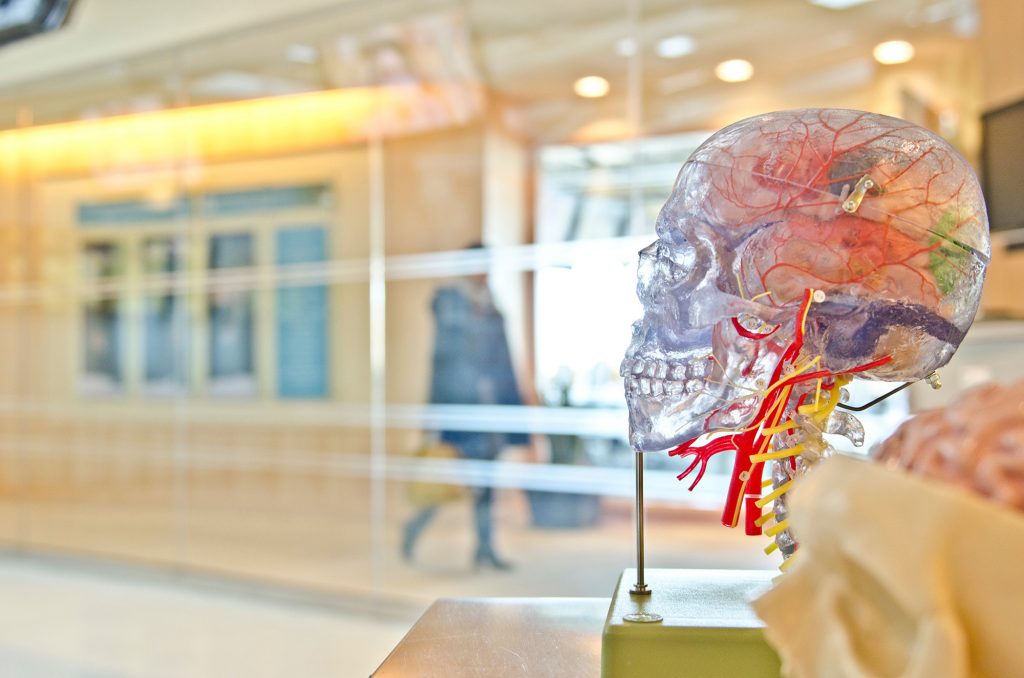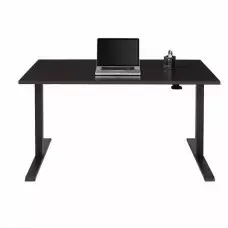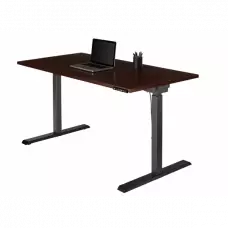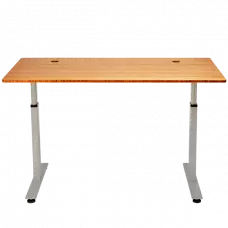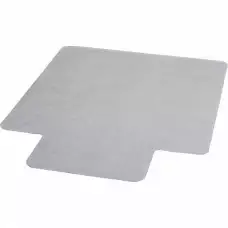 Standing more can save your life. Recently, a lot of research has connected various health risks with prolonged sitting or inactivity. Most Americans spend an average of 10 hours a day sitting down. This constant sitting means your body is inactive for much longer than a quick workout can make up for.
Standing more can save your life. Recently, a lot of research has connected various health risks with prolonged sitting or inactivity. Most Americans spend an average of 10 hours a day sitting down. This constant sitting means your body is inactive for much longer than a quick workout can make up for.
Health Risks
When you sit down, your body tells itself to shut down. Your metabolism slows, the systems that process your blood sugar and cholesterol stop, and your body starts to store the fat. This buildup of fatty acids can move into and clog your heart. Studies show that people who sit an average of 10 hours a day are at a much higher risk for heart disease than people who sit for less extended periods of time.

Furthermore, your body stops reacting to insulin. This leads to the creation of more insulin, increasing the risk for diabetes. This bodily reaction is almost instantaneous, meaning you are more at risk of diabetes after one day of extended sitting. Diabetes risk aside, extended sitting increases your risks of lung, colon, and uterine cancers by up to 66 percent, according to the 2015 Inaugural Active Working Summit. Research also directly associates a higher risk of breast cancer with excessive inactivity.
Furthermore, the digestive tract compresses as a result of extended sitting. Not only does this slow down your digestive system, but it also leads to cramping and constipation. In turn, this can cause dysbiosis in the gastrointestinal tract. Dysbiosis is associated with conditions like Irritable Bowel Syndrome, celiac disease, asthma, cardiovascular disease, and obesity.
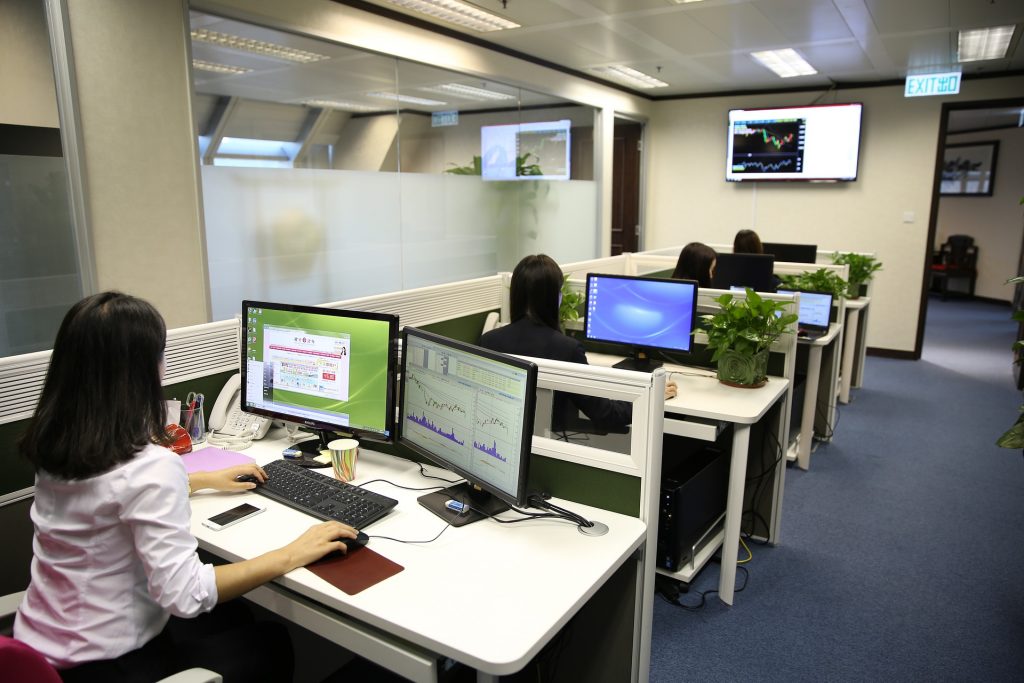
Effects on the Body
Besides internal health risks, constant sitting also leads to muscle and joint pain. Hunching forward at a desk all day can permanently make your spine imbalanced. This leads to constant neck, shoulder, and back pain as well as bad posture. Sitting also prevents your spine from contracting, making it less flexible and more likely to get a herniated disc. When you're standing and moving, your spine allows nutrients in between the disks, keeping it healthy and your body happy.
Do you wonder why you're losing your abs without changing your workout routine? It's because your muscles degenerate when you sit. This especially affects your abdominal muscles because they don't do any work when you sit. Side note, your glutes don't work when you sit either. You can blame sitting for your flabby butt. Muscle degeneration also heavily affects your hips. They become tight and have a limited range of motion when they aren't extended for a long period of time.
When you sit, you don't use your legs. Not using your legs causes the bones weaken which makes them break more easily. This also puts you at a higher risk for osteoporosis. When you take an international flight, doctors recommend taking baby advil as a blood thinner to prevent poor circulation from being seated for 15 hours straight. Most people don't take blood thinners before going to work for the day. The low circulation causes swelling, varicose veins, and blood clots to form in your legs. Not only can this be painful, it's also not attractive.
Effects on the Brain
When you sit still for too long, your brain activity slows down. Your body thinks it's time to rest, so it starts shutting down the active brain to allow this. It slows the brain's intake of fresh oxygen and blood. These are needed for the release of chemicals in the brain that trigger thought processes. Consequently, the brain becomes sluggish and unable to focus.
Moreover, more movement has proven to increase brain activity and cognitive skills. Aristotle would encourage others to teach while walking, forming the Peripatetic School with intricate pathways for this. Even Steve Jobs worked while walking to increase brain activity. Clearly, the highest minds have associated movement with better thinking.
A 2014 study, "The Importance of Physical Activity and Aerobic Fitness for Cognitive Control and Memory in Children," found that physical activity is important for developing cognitive health, especially during childhood. It showed that children who are physically fit outperform inactive children on cognitive tests. Researchers found more gray matter in the hippocampus and basal ganglia in children who were more active. These areas of the brain are associated with memory and cognitive control. While this research focuses on children and physical activity, adults do suffer from the same cognitive loss when they are primarily inactive during the day.
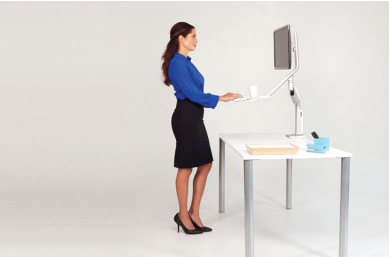
Solutions
Clearly, sitting all day leads to many health risks. Medical experts recommend limiting sitting to a maximum of five hours a day. However, most workplaces require much more sitting. Chiropractors recommend taking a 10 minute walk for every hour spent seated. It's hard to be aware of your seated time when you're busy with work. Even periodically walking around is difficult to do day-to-day.
So, now that you're scared of sitting all day, what can you do to fix the problem?
The most obvious answer is to remove the problem. Stop using a desk that requires sitting. Today, many products remove the need to sit at a desk. Several desks on the market have motorized lifts that will convert the desk height to accommodate standing. You can also buy a monitor/laptop riser that does the same thing on a smaller scale for whatever device you're using at work. Beverly Hills Chairs sells a wide array of both of these products at various price points.

The Standing Office Environment
So, standing and activity are the solution to the health problems that come with sitting for too long. You might be concerned about standing all day. Maybe your feet will hurt, maybe it will mess with your knees, etc. It is a common misconception that because standing is uncomfortable, it's bad for you.
According to Dr. Levine, author of Get Up!, "When somebody gets a standing desk, they generally stand for several hours a day. But they don't stand still. A couple of things happen. The first thing that happens is, they generally move from leg to leg and generally change their body posture quite a lot. That weight-bearing and adjustment of weight-bearing has a whole series of physiological benefits to the musculature, the balance in musculature, the visual cortex, the testicular system, and so on."
While standing still isn't a wonderful solution, the effect of the standing desk is that you're less likely to be immobile. Offices with stand up desks create an environment where everyone is constantly moving: walking over to talk to each other instead of emailing, moving around your desk as you work, or just shifting your weight between each foot. This motion is not only beneficial to your back and spine, but it also burns more calories. This office environment will have you reaching your 10,000 step goal in no time.
Health Benefits of Standing
While the active office environment is a huge benefit of more standing, there are also many health benefits that just come from standing more. A study from the University of Queensland, Australia found that an extra two hours of standing a day lowers your blood sugar and cholesterol levels. This can reduce risk of coronary heart disease and is just better for your heart in general.
Standing also helps with weight loss. It burns 50 more calories per hour than sitting. This benefit is multiplied when taking into account that a stand up desk encourages the user to move around more, burning more calories. Standing also contracts your abdominal muscles, which won't build abs but will help in retaining them.
The increased movement reduces the risk of colon and breast cancer. As previously mentioned, lack of physical activity is the leading cause for these cancers. Ovarian, prostate, lung, and endometrial cancer are also related to a prolonged lack of activity but it is not the leading factor.
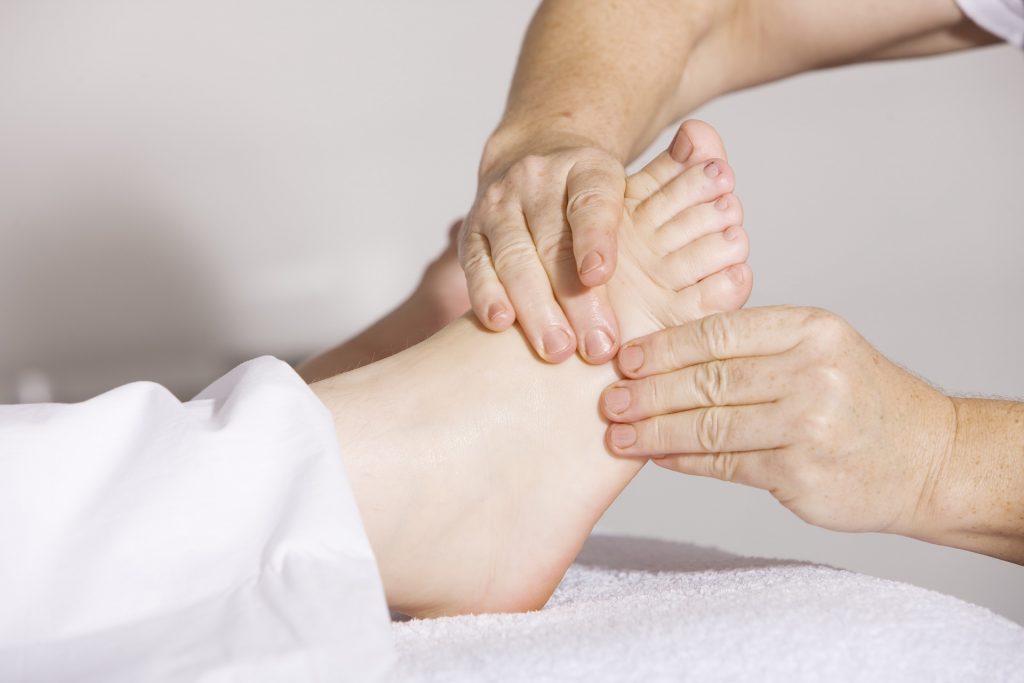
Easing Joint Stress
While standing is better than sitting, it does come with its own issues. It puts more stress on your joints around your feet and legs, even on your shoulders for maintaining posture. This can also lead to varicose veins. It is especially difficult to adjust to standing when you're used to sitting all day. A good tip is to ease into just standing. You can buy motorized stand up desks and just switch in between standing and sitting every hour or couple of hours to get used to it. This also works as a permanent solution, because you're removing the hours of being stationary.
Many products solve the problems that arise from extended periods of standing. Beverly Hills Chairs offers an Anti-Fatigue Mat which provides support that reduces fatigue and the stress on your joints.
A recently funded product through crowdfunding site, Indiegogo, is also making its way in the standup desk world. The Level from FluidStance is a balance board designed to mimic the motion of walking just from standing on it. This leads to increased heart rate, burning more calories, as well as relieving the stress on joints as it is constantly moving between different joints.
If that's not your style, the Wurf Board combines the anti-fatigue mat with the Level to bring you a stationary mat that encourages micro-movements through its springboard. Honestly, these solutions to joint stress sound so fun, I'd get a standing desk just to use them.
Alternative Solutions
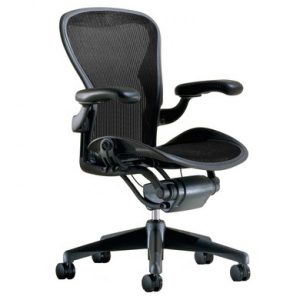
Of course, not everyone's office can accommodate a standing desk. Don't worry, all hope is not lost! Even if you have to sit at the office all day, using an ergonomic chair like a Herman Miller Aeron will improve your posture and reduce stress on the spine and bowel system. You won't be burning calories, but you also won't have to worry about other health risks from consistent sitting.



